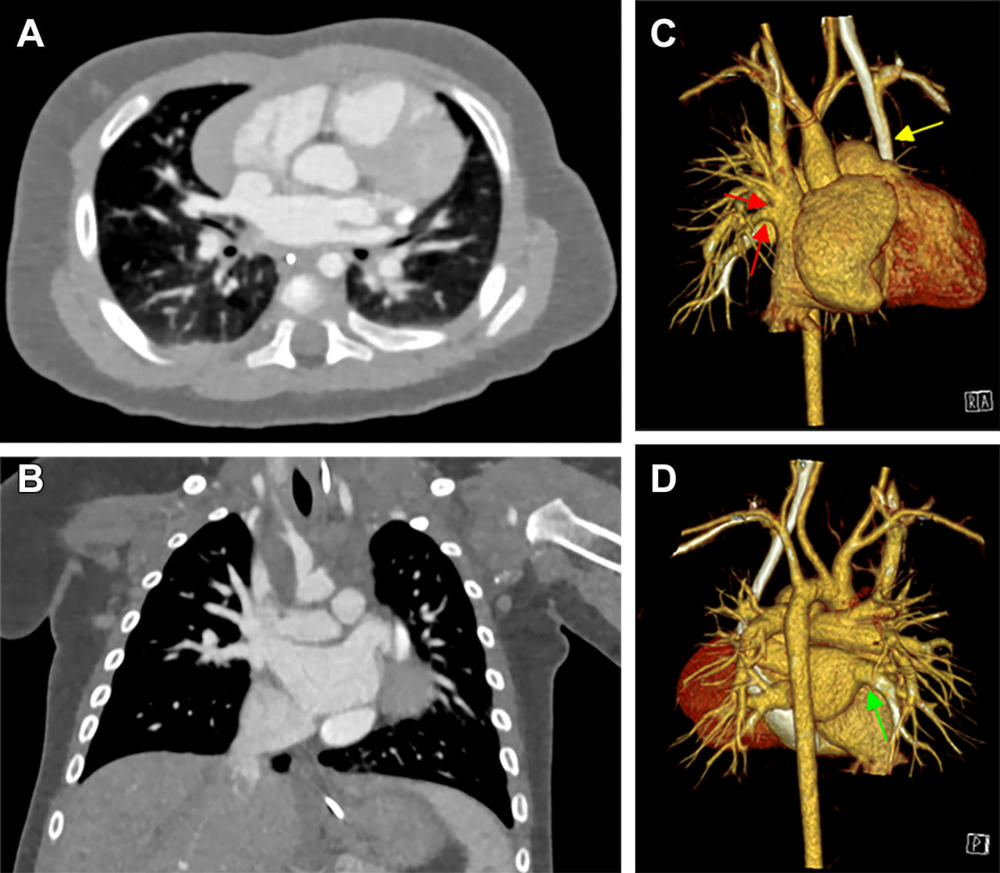Photon-Counting CT Delivers Higher SNR, CNR Than Dual-Source CT in Infants
Images

A study published in Radiology reports that photon-counting CT (PCCT) offers better cardiovascular imaging quality at a similar radiation dose compared to dual-source CT (DSCT) in neonates and infants with suspected cardiac heart defects, with a higher signal-to-noise ratio (SNR) and contrast-to-noise ratio (CNR). Both image quality and radiation dose were evaluated in ultrahigh-pitch PCCT and ultrahigh-pitch DSCT in children suspected of having congenital heart defects.
The prospective study was performed on existing clinical CT studies of pediatric patients who underwent contrast-enhanced PCCT or DSCT in the heart and thoracic aorta between January 2019 and October 2022. A total of 113 children with a median age of 66 days were included, of which 30 underwent PCCT and 84 underwent DSCT. One child underwent both PCCT and DSCT within 14 days due to a clinically necessary follow-up. CT dose length and dose-length product were used to calculate effective radiation dose. Standardized region-of-interest analysis was used to calculate both SNR and CNR. Visual image quality was assessed by four independent readers on a five-point scale, with 5 being excellent or absent; 4, good or minimal; 3, moderate; 2, limited or substantial; and 1, poor or massive.
“Infants and neonates with suspected congenital heart defects are a technically challenging group of patients for any imaging method, including CT,” said Timm Dirrichs, MD, senior physician and specialist in cardiothoracic radiology in the Department of Diagnostic and Interventional Radiology at RWTH Aachen University Hospital in Aachen, Germany. “There is a substantial clinical need to improve cardiac CT of this vulnerable group. It’s essential to carefully map the individual cardiac anatomy and possible routes of surgical intervention using the highest possible diagnostic standards.”
PCCT is an emerging imaging technique that counts the exact number and measures the energy of incoming x-ray photons. Compared with DSCT technology, PCCT offers higher image resolution and/or reduced radiation doses, which is of particular interest when imaging children. The PCCT technique has already been shown to improve cardiovascular CT imaging in adults. However, data on neonates and small children are lacking.
The researchers found that the PCCT images were sharper, with less image noise and greater contrast than DSCT images. The mean overall visual image quality ratings were higher for PCCT versus DSCT at a similar radiation dose. More than 97% of the PCCT images were at least diagnostic quality, compared to 77% of the DSCT images.
“In our study, none of the PCCT examinations exhibited a poor image quality, and only a few were of limited or moderate quality,” Dr Dirrichs said.
He noted that of the DSCT images, almost one-quarter were of limited or non-diagnostic quality, and 40% were of moderate quality. The authors also noted that the patients undergoing PCCT were younger and therefore more challenging than the patients undergoing DSCT.
“PCCT is a promising method that may improve diagnostic image quality and efficiency compared to DSCT imaging,” Dr Dirrichs said. “This higher efficiency can be used to reduce the radiation dose at a given image quality level or to improve image quality at a given radiation level.”